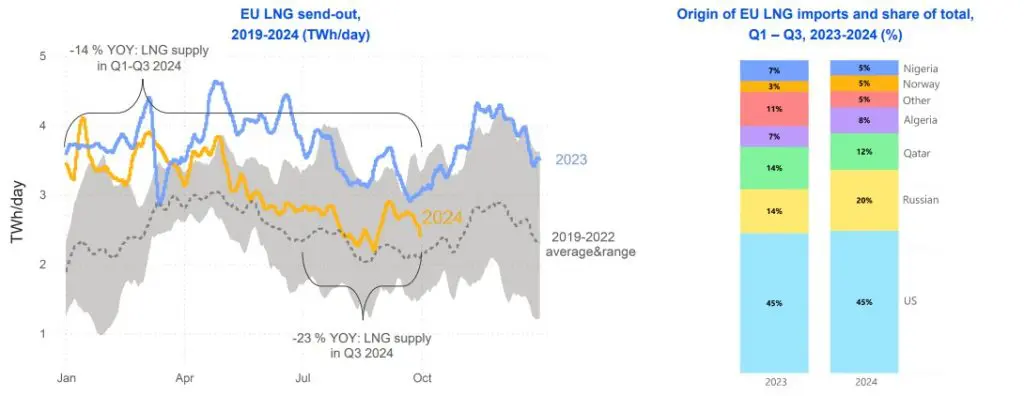This story requires a subscription
This includes a single user license.
ACER said in its quarterly review of key developments in European gas wholesale markets that European gas wholesale prices rose in the third quarter but remained less volatile than last year due to increased Norwegian supply, healthy storage levels, and low demand.
According to the report, price integration across most EU gas hubs remained consistent, although some divergence occurred due to the rising German storage levy.
ACER said stagnant household demand and a modest increase in industrial demand were outweighed by a reduced call on gas-fired electricity generation, leaving overall EU gas demand slightly lower than in 2023 and well below pre-crisis levels.
In addition, increased renewables’ output limited the opportunities for conventional power plants (gas and coal) to run profitably.
According to ACER, this lowered carbon emissions, loosened the EU gas demand-supply balance, and reduced instances of gas setting marginal prices in electricity markets.
ACER noted that the EU reached its 90 percent gas storage target ahead of schedule, despite lower year-on-year injections throughout the quarter.
Also, gas transmission tariffs have been rising in some EU countries, with little evidence so far of impacting price convergence.
ACER said more tariff increases are expected in the near-term, warranting monitoring of the effects of tariff changes on cross-border trade and market integration.
LNG imports down
ACER said EU LNG imports registered the lowest quarter since the fourth quarter of 2021, despite improved production of the super-chilled fuel (up 3 percent globally compared to the third quarter in 2023).
The EU share of the global LNG import market shrank to 18 percent from 24 percent in the third quarter of 2023.

“While demand from other LNG importing regions increased, an otherwise balanced European gas market saw EU buyers shy away from competing for higher priced spot cargoes,” ACER said.
ACER noted European LNG terminals saw their highest historical utilization less than two years ago (i.e., in the fourth quarter of 2022), but additional terminal capacity coupled with lower demand saw Q3 2024 pass with “substantial” spare LNG capacity.
Questions around EU LNG capacity saturation notwithstanding, spare LNG capacity is one of the key flexibility resources for managing the gas supply-demand balance both seasonally (e.g., in Greece) and structurally (e.g., any additional decline of Russian pipeline supply will largely be substituted by LNG), ACER said.
Challenges ahead
ACER said the Russian gas transit agreement through Ukraine expires in 2024, pushing Central Europe to seek alternative supply routes.
“If gas withdrawals this winter significantly exceed the previous years, the EU may face increased competition in LNG markets for 2025, potentially driving up wholesale gas prices,” it said.
Several LNG production projects are under construction, but ACER said major new LNG volumes are expected only from 2026 onwards.

